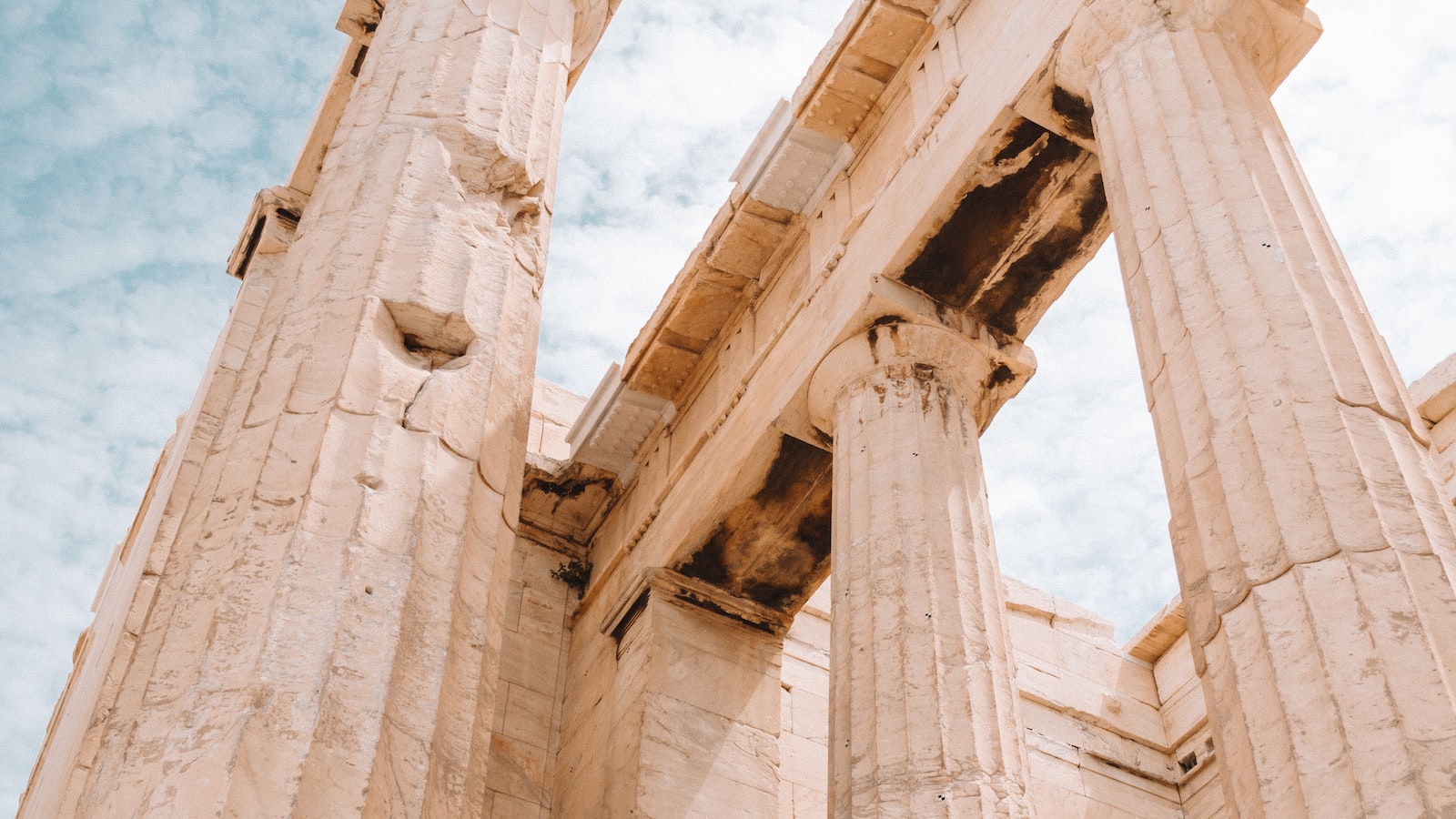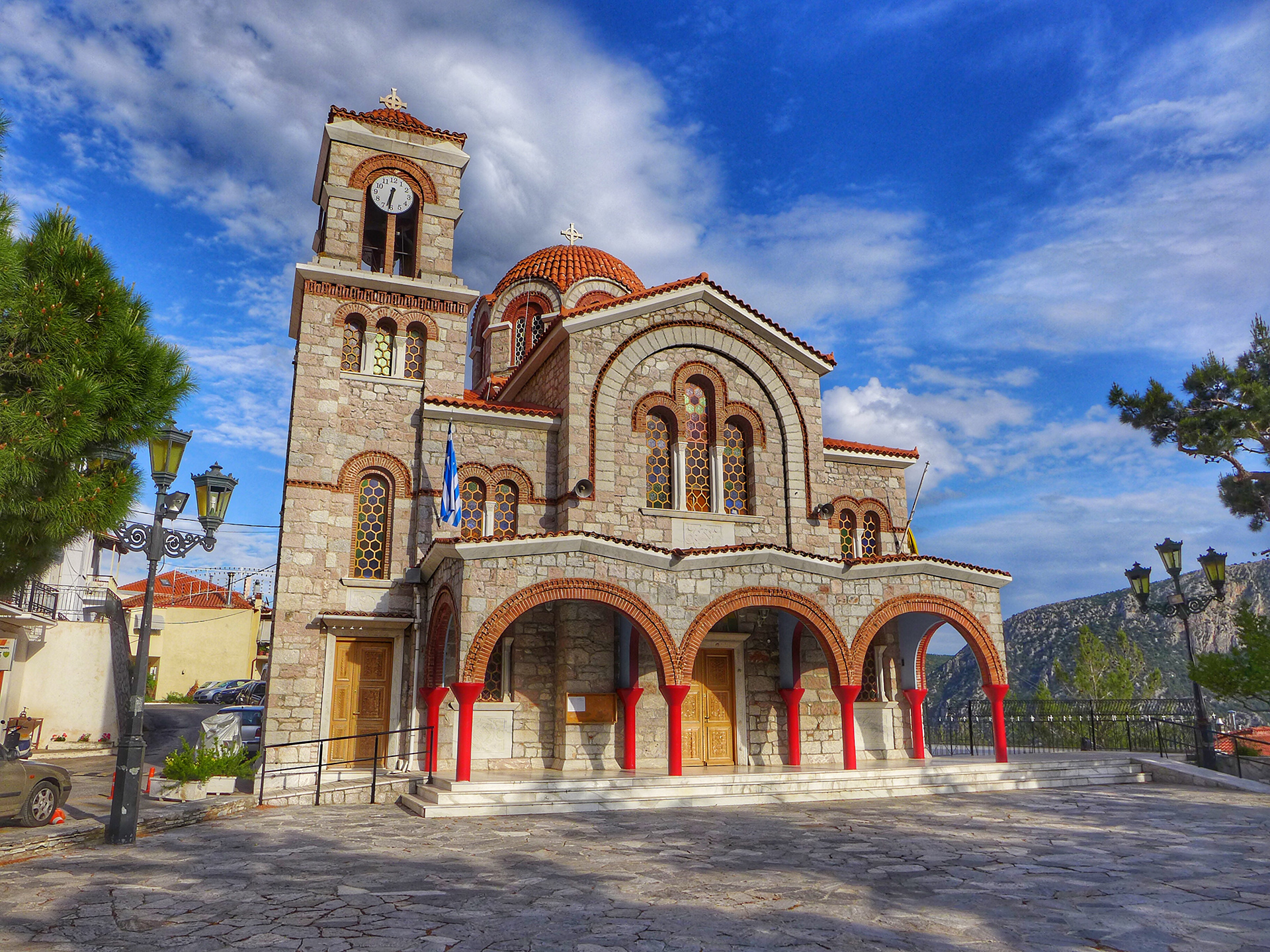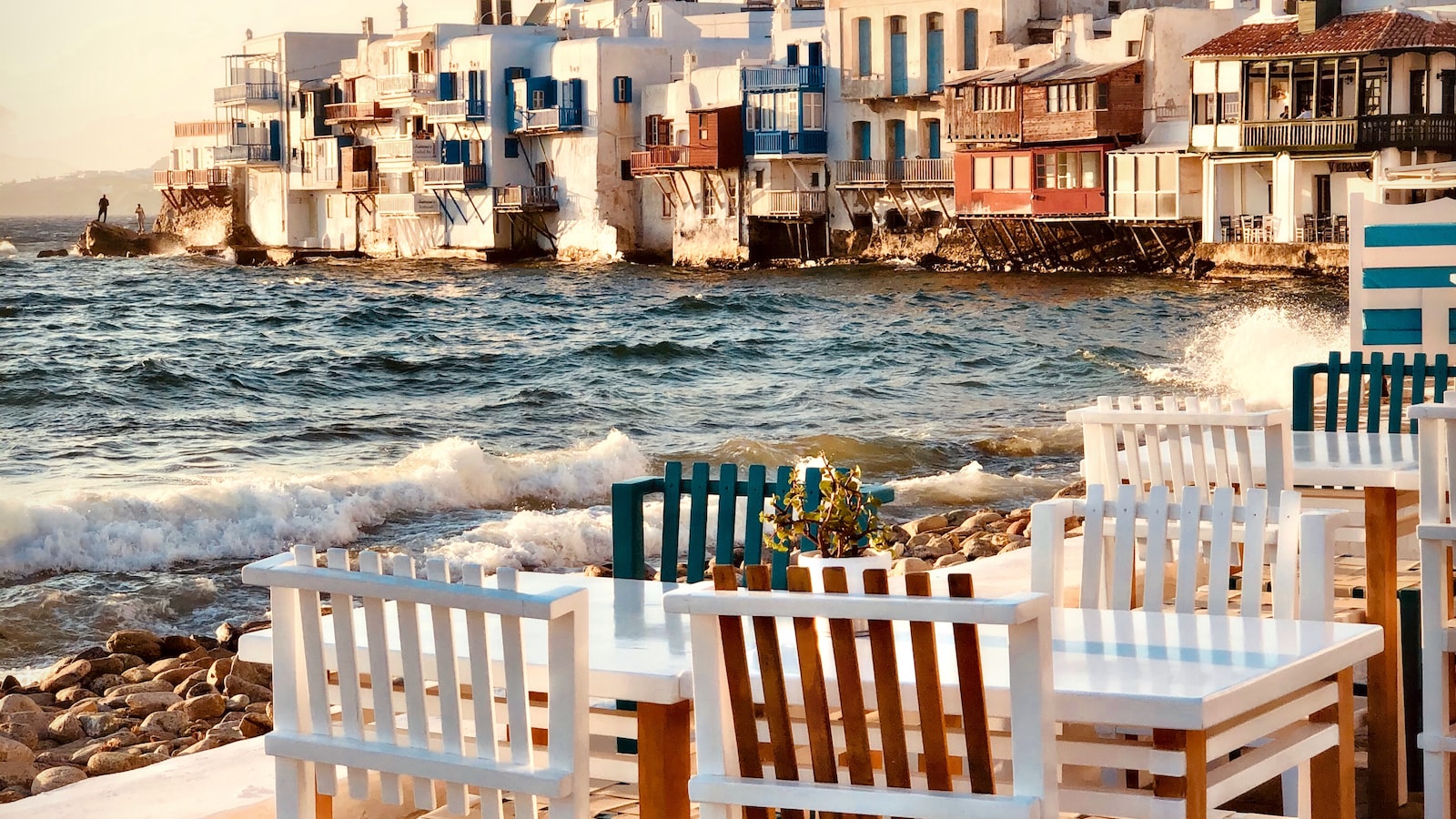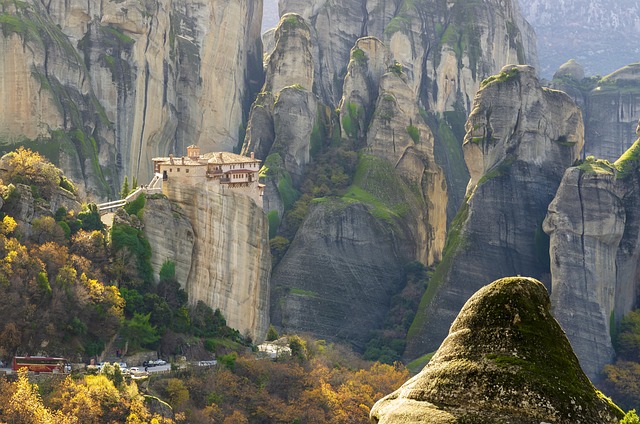Nestled amidst ancient ruins and timeless traditions, Greece invites you to embark on the most enchanting of springtime journeys – Greek Orthodox Easter. Bursting with symbolism and brimming with festivities, this religious celebration encapsulates the essence of Hellenic culture, captivating both locals and visitors alike. From the somberness of Holy Week to the triumphant resurrection of Christ, this vibrant tapestry of customs and rituals paints a vivid picture of devotion, faith, and renewal. Join us as we delve into the heart and soul of Greek Orthodox Easter, where the sacred and the secular effortlessly intertwine, infusing each moment with a palpable aura of reverence.
The Rich Symbolism of Greek Orthodox Easter: A Salvation Story Embodied in Traditions and Rituals
Greek Orthodox Easter is a celebration deeply rooted in symbolism and traditions that have been passed down through generations. This joyous occasion not only commemorates the resurrection of Jesus Christ but also embodies a powerful salvation story. The rituals and customs observed during Greek Orthodox Easter are rich with meaning, serving as a reminder of the sacrifice, triumph, and hope that lie at the core of the Christian faith.
One of the most significant symbols of Greek Orthodox Easter is the Paschal Lamb, representing Jesus Christ as the Lamb of God who takes away the sins of the world. The lamb holds great importance in the Orthodox tradition, signifying purity, innocence, and sacrifice. It is often seen adorned with a cross and a flag, symbolizing the victory of Christ over death. Additionally, the beautifully decorated Easter eggs are a symbol of rebirth and new life, reflecting the resurrection of Jesus. These eggs are dyed red to symbolize the blood of Christ and the eternal life He offers to believers.
The Greek Orthodox Easter rituals are not limited to symbolism alone; they also include a vibrant display of festivities. The midnight church service, known as the Resurrection service, is a highlight of the celebration. Worshipers gather to witness the lighting of the Holy Fire and the procession of the resplendent Epitaphios, a symbolic representation of Christ’s burial. Traditional singing and hymns fill the air as believers celebrate the miracle of Christ’s resurrection. The joyous occasion continues with feasting, where families and friends gather to enjoy a delectable spread of traditional Greek cuisine, including succulent lamb, tsoureki (braided Easter bread), and flavorful salads. Greek Orthodox Easter is truly a time of reflection, unity, and rejoicing, where the rich symbolism and festive traditions come together to create a unique and meaningful celebration of faith.
Indulge in the Festive Delights of Greek Orthodox Easter: Culinary Delicacies and Traditional Treats
As the spring season ushers in new beginnings, the Greek Orthodox Easter emerges as a quintessential celebration, steeped in symbolism and enriched with culinary delights. This ancient religious holiday holds a special place in the hearts of Greek communities around the world, uniting families and friends in a joyous and festive atmosphere. At the heart of this celebration lies a tantalizing array of culinary delicacies and traditional treats that are sure to ignite your taste buds and transport you to the charming streets of Greece.
Greek Orthodox Easter is not complete without indulging in the rich flavors and mouthwatering aromas of its traditional cuisine. From the succulent lamb roasts, slow-cooked to perfection and infused with fragrant herbs, to the delectable honey-drenched pastries like baklava and kataifi, the festive table overflows with gastronomic treasures. For those seeking a savory experience, the classic spanakopita and tiropita, savory spinach and cheese-filled pastry triangles, are sure to entice your palate. And let’s not forget the delectable Greek Easter bread, Tsoureki, a rich, sweet bread flavored with orange zest and exotic spices, often beautifully braided into intricate shapes.
Every dish translates into a profound cultural significance, with its roots deeply embedded in traditions that have been passed down through generations. The egg, an ancient symbol of rebirth and new life, takes center stage during Greek Orthodox Easter, enticing taste buds and captivating the imagination. The custom of dyeing eggs red to represent the blood of Christ is a cherished tradition, and an egg-cracking competition known as “tsougrisma” adds an element of friendly competition to the festive celebrations. These culinary delights and traditional treats create an enchanting tapestry of flavors that reflect the rich cultural heritage and spiritual significance of Greek Orthodox Easter.

Discover the Mesmerizing Beauty of Greek Orthodox Easter Celebrations: Vibrant Processions and Joyful Customs
Witnessing the Greek Orthodox Easter celebrations is like stepping into a world of enchantment. This symbolic and festive occasion is renowned for its vibrant processions and joyful customs that truly mesmerize all who partake in the festivities. The rich cultural heritage and deep religious significance make Greek Orthodox Easter a unique and unforgettable experience.
One of the main highlights of the celebration is the Midnight Resurrection service, where believers gather in churches across Greece. As the clock strikes twelve, the priest announces the resurrection of Christ, and the church is plunged into complete darkness. Suddenly, a single candle is lit, symbolizing the Light of Christ. From this flame, one by one, the worshippers’ candles are lit, spreading the holy light throughout the church in a breathtaking display. In that magical moment, the air is filled with anticipation, as people exchange the greeting “Christos Anesti,” meaning “Christ has risen,” and respond with “Alithos Anesti,” which means “Truly, He has risen.” The flickering glow of the candles combined with the resounding chants and hymns create an atmosphere that is both awe-inspiring and deeply spiritual.
The festivities continue outside the churches with processions that illuminate the night. Worshipers, carrying their lit candles, proceed through the streets, creating a mesmerizing sight of flickering lights. People of all ages, dressed in their finest attire, join in the procession, singing hymns and traditional songs. The atmosphere is joyous and electric, with a palpable sense of community and togetherness. Along the way, homes and shops are adorned with vibrant decorations and colorful flowers, bringing a festive touch to the celebration. This procession is truly a spectacle to behold, as it exemplifies the unity and devotion of the Greek Orthodox community and showcases the mesmerizing beauty of Greek Orthodox Easter.
Immerse Yourself in the Spiritual Journey of Greek Orthodox Easter: Recommendations for Participating in Sacred Observances
Experience the transformative power of Greek Orthodox Easter as you immerse yourself in a journey of spiritual significance and festive traditions. This sacred celebration is deeply rooted in the rich religious heritage of Greece, a captivating blend of ancient customs and Christian beliefs. Greek Orthodox Easter, also known as Pascha, is a symbolic and joyous event that offers a unique opportunity to witness the devotion and devotion of the Greek people.
During this vibrant celebration, numerous sacred observances take place, each with its own profound meaning. By actively participating in these rituals, you can deepen your understanding of Greek Orthodox traditions and embrace the spiritual essence of Easter. Here are a few recommendations to make the most of this extraordinary experience:
- Attend the Holy Week services: Begin your spiritual journey by attending the Holy Week services, which commence on Palm Sunday and continue until Easter Sunday. These deeply moving services include processions, liturgies, and prayers that commemorate the final days of Jesus Christ’s life.
- Witness the Resurrection service: The highlight of Greek Orthodox Easter is the Resurrection service, held on Holy Saturday night. As the clock strikes midnight, the chanting of “Christos Anesti” (Christ is risen) fills the air, followed by the joyful lighting of candles and the exchange of greetings. Join the crowds outside the churches to witness this awe-inspiring moment and immerse yourself in the jubilant atmosphere.
- Partake in the midnight feast: After the Resurrection service, it is customary to gather with friends and family for a festive midnight feast, known as the “Megalóchareo.” Indulge in traditional Greek delicacies, such as lamb, tsoureki (sweet bread), and red-dyed eggs, while sharing laughter and reconnecting with loved ones.
Key Takeaways
As the twilight sun sets behind the picturesque landscape of Greece, casting a golden glow upon the rugged mountains and turquoise seas, the jubilant echoes of laughter and song fill the air. Another Greek Orthodox Easter has drawn to a close, leaving behind memories that will forever be cherished.
In this vibrant tapestry of rich culture and heartfelt traditions, the celebration of Greek Orthodox Easter stands as a beacon of unity and spiritual significance. From the hallowed halls of ancient churches to the humble homes adorned with vibrant floral wreaths, this festive occasion weaves together centuries-old customs, captivating legends, and an unwavering devotion to faith.
As the dawn of Easter Sunday breaks, a palpable sense of anticipation fills the hearts of the Greek Orthodox faithful. The mystical tale of the Anastasis, the Resurrection, is the epicenter of this celebration, signifying the triumph of life over death and hope over despair. Overflowing with symbolism, the Holy Fire that is miraculously ignited within the Church of the Holy Sepulchre in Jerusalem is carefully brought home, spreading warmth and illumination to every corner of Greece.
From the crackling bonfires that flicker in the darkness, illuminating the faces of all who gather around them, to the harmonious melodies of hymns filling the air, the Greek Orthodox Easter celebration enchants the senses and stirs the soul. The aroma of traditional delicacies, such as succulent lamb roasting on spits and aromatic tsoureki, laces the atmosphere, luring family and friends together in a joyous feast.
Like threads in a masterful embroidery, each region in Greece honors this sacred occasion with its unique traditional practices. In the picturesque island of Corfu, the sky bursts into a kaleidoscope of colors as hundreds of clay pots are hurled from balconies, a symbolic act that banishes evil spirits and ushers in a year of good fortune. On the island of Chios, an awe-inspiring fireworks battle ensues, as rival parishes try to outshine each other in a shower of sparks, illuminating the night sky with unmatched splendor.
Greek Orthodox Easter transcends mere religious devotion; it unites generations, solidifies communities, and rekindles the hope in every soul. As the last notes of hymns fade into the night, and the dance of the flickering candles ceases, one can’t help but feel a renewed sense of faith, a deeper connection to the past, and an unshakeable hope for the future.
Greek Orthodox Easter is more than just a celebration; it is a testament to the unwavering spirit of the Greek people, a reminder that even in the darkest of times, faith and tradition can light the path towards joy and renewal. So as the echoes of this symbolic and festive celebration fade into the horizon, let us carry these timeless traditions and the spirit of unity in our hearts, cherishing the legacy of Greek Orthodox Easter forevermore.

